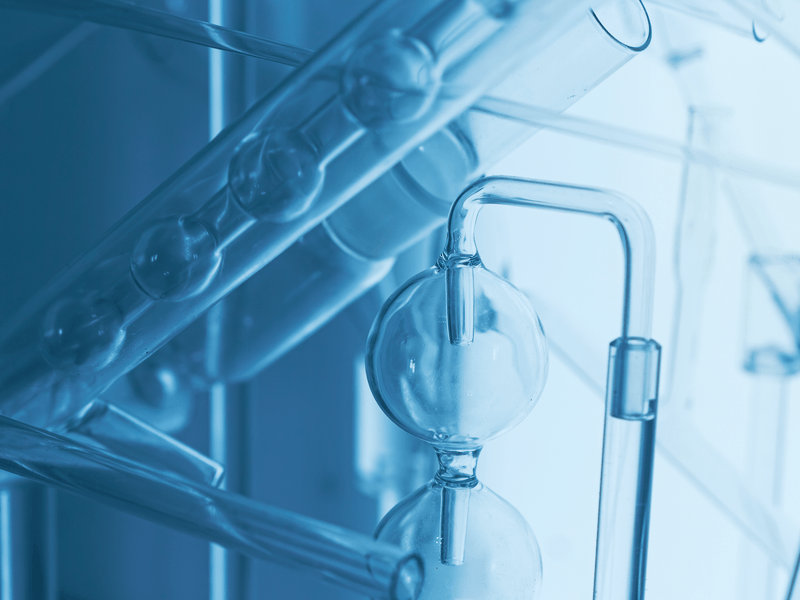Shifting the Landscape for the Future of Bioprocessing
The bioprocessing industry is evolving and the space is shifting towards greener, smarter and more efficient technologies. Read Lexie's latest blog to learn why companies like like MAGic Bioprocessing and Akadeum Life Sciences are transforming outdated downstream methods with innovative magnetic and microbubble solutions that cut waste, energy use, and complexity.
- Science
- Technology
Posted November 24, 2025
Shifting the Landscape for the Future of Bioprocessing
The bioprocessing industry is experiencing full transformation.Driven by the growing demand for biologics, vaccines andsustainable materials, companies must now embrace greener, smarter and more efficient practices to stay competitive in the market.
Across the United States, bioprocessing practices are shifting from traditional, resource-heavy methods tocleaner and more cost-effective approaches. This change is sparked by the high cost of traditional equipment, ultimately abolishing outdated methods and introducing a new era of innovation.
Lately, the prolonged steps of downstream manufacturing prove inefficient. In fact, downstream processing remains a persistent obstacle in the efficiency of biomanufacturing. Time consuming techniques such as chromatography, filtration and centrifugation often require extensive downtime between stages, leading to significant delays in production.
The drive to streamline processes is naturally steering the industry towards greener technologies, aiming to reduce waste, lower energy usage and improve sustainability. What was once a choice is now slowly butsurely becoming a competitive necessity for companies in the market. In an industry where margins are tight and global demand is rising, high quality technologies with limited environmental impact provide companies with a distinct advantage. Together, companies like MAGic Bioprocessing and Akadeum Life Sciences highlight the potential of forward-thinking solutions to reshape the future of bioprocessing worldwide.
MAGic has introduced innovative magnetic based technologies that streamline the complex steps of downstream bioprocessing. Their MAG-SP platform uses super-paramagnetic beads and automated magnetic separators to combine clarification, capture and isolation of biologics into a one-step process. The magnetic separation replaces centrifugation, depth filtration and column-chromatography, overall reducing energy, materials and waste. MAGic’s technology addresses one of the most persistent hurdles in biomanufacturing, clarification. Their solution bridges the gap between upstream processing and downstream processing by offering a scalable solution that directly replaces outdated clarification methods, overall creating a more unified and sustainable workflow.
"Sustainability is non-negotiable in the future of bioprocessing. Implementing large-scale magnetic separation enables lower resource and water consumption compared to legacy technologies."
Peter Karlberg, CEO MAGic BioProcessing
Unlike traditional separation methods that rely on magnetic microbeads, Akadeum Life Sciences embraces buoyant microbubbles to isolate target cells and biomolecules. Thisgentle approach enables the efficient transport of even the smallest cells or particles without the risk ofdamage that can occur with other downstream applications.
For Akadeum, microbubbles optimize the cell separation process for time, ease and overall cost. Despite its simplicity, the method produces accurate results with minimal disruption. And while conventional methods often require complex, costly machinery, Akadeum’s technology can be performed using northing more than a straightforward separation kit.
The shift towards simpler, more user-friendly tools reflects a wider trend across the bioprocessing industry, yet as seen in the shift from stainless steel to single use systems, this benefit has its own hidden environmental disadvantages. Whilst single use technologies are dramatically reducing energy usage, the increase in plastic waste arguably damages the environment in an alternative way. To combat this, companies are beginning to explore recycling initiatives to not only remove the environmental burden but also the financial cost.
As a matter of fact, the past decade has seen a significant increase in companies moving towards continuous bioprocessing to reduce costs.By incorporating an ongoing manufacturing process, companies can minimise downtime and reduce their expenses. This shift towards continuous bioprocessing is nothing new - the concept has been explored in industry and academia for over 75 years, yet only as of 2015 did the FDA start endorsing the practice. Yet, of course, continuous bioprocessing comes with its own drawbacks.Extended run times, for instance, can increase the risk of contamination, and consumable costs may be higher. Despite this, these considerations are often outweighed by a key advantage; the ability to operate with amuch smaller footprint, requiring less physical space.
Outsourcing has also become popular across the sector, and this is becoming apparent through CDMOs and outsourcing organisations who just take part of the process away. Avantor provides outsourced buffer solutions to help biopharmaceutical businesses reduce their costs and risks whilst improving efficiency. For many companies, outsourcing can be a game changer in freeing up valuable resources and optimizing internal operations, all whilst cutting talent costs through eliminating the need of certain focus teams.
Cost bases have always been a hot topic across the industry. It’s no secret that Capital equipment costs can escalate quickly, so suppliers must balance competitive pricing with delivering reliable performance. The drive to optimize these costs is common across the sector, extending beyond equipment suppliers. In May, Meatly announced that they had created a bioreactor which was able to reduce costs by 95% and medium costs to 1.5p/l at scale. Whilst this advancement is aimed at supporting the cultivated meat sector by reducing reliance on costly biopharma reactors, it perhaps raises an alternative question: Could biopharma- focused equipment companies similarly deliver far more affordable solutions?
As bioprocessing continues its transformation towards greener, smarter, and more cost-efficient solutions, the industry’s future will be defined by those who can adapt quickly to these technological and operational shifts, whilst also anticipating future trends. From magnetic separation platforms and buoyant microbubble technologies, to continuous processing and outsourced solutions, innovation is reshaping not only production methods but also the skill sets required to thrive. Going forward, companies will need talent that understands all advanced bioprocessing systems,the competitive market landscape and sustainability-driven practices, making recruitment a critical factor in staying competitive. The organizations that align cutting-edge technology with top-tier talent acquisition will be best positioned to lead this new era of biomanufacturing and will continue to advance the sector.
Share this Blog
Centred around care, trust and respect
Shifting the Landscape for the Future of...
The bioprocessing industry is evolving and the space is shifting towards greener, smarter and more efficient technologies. Read Lexie's latest blog to learn why companies like like MAGic Bioprocessing and Akadeum Life Sciences are transforming outdated downstream methods with innovative magnetic and microbubble solutions that cut waste, energy use, and complexity.

Lexie Farrar
Lexie primarily focuses on Precision Medicine, OMICS and CGT tools within the US and Europe. Lexie joined Jackson Hogg at the beginning of May 2024...

How to Prepare for a Video Interview ...
Read our blog to learn everything you need to know to prepare for a video interview.

Beth McParlin
Beth joined Jackson Hogg in February 2024 as a part-time Associate Consultant. She initially joined Jackson Hogg alongside her Fashion Marketing...

The Future of Hiring ...
The future of hiring is determined by the rapid rate of advancing technology and ongoing demands for flexible and hybrid working opportunities. See our insight into exactly how these elements help to predict the future of hiring.

Beth McParlin
Beth joined Jackson Hogg in February 2024 as a part-time Associate Consultant. She initially joined Jackson Hogg alongside her Fashion Marketing...



